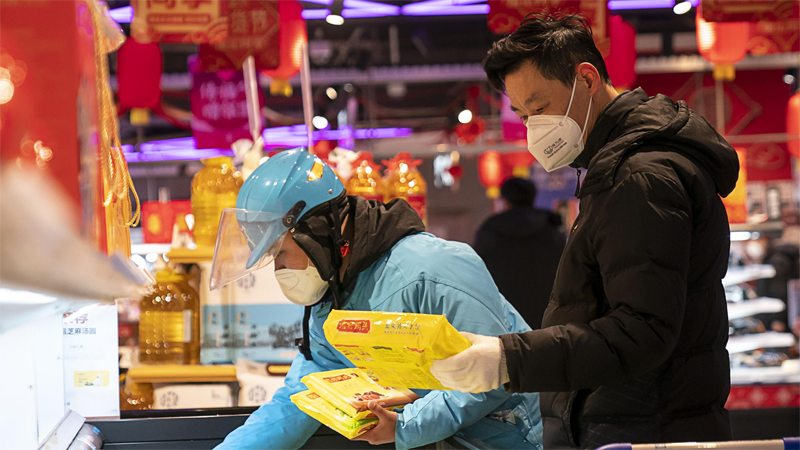How to use grocery apps during big disruptions


I'm not quite the party animal but I'm definitely not a homebody since I dine out almost every day of the week. To me, cooking is usually done on a whim, but this has changed since the COVID-19 outbreak, which has forced many restaurants to temporarily shutter and me to stay home and avoid any chances of infection.
To minimize contact with the outside world, I've turned to mobile apps to get groceries delivered to my doorstep. It's definitely no easy feat to prepare meals in light of the sudden spike in demand for provisions and anxiety that products could become scarce. Wait times for delivery have also gotten longer due to shortage of deliverymen and restrictions on their movements.
Snapping up food and cooking ingredients might seem simple in normal times, but given the ongoing epidemic, doing so now requires a mastery over different apps, perseverance and luck.
So, here's a list of major apps that digital-savvy consumers in China-I count myself as an expert user of apps-rely on to get groceries during these testing times. Disclaimer: Each app has its own pros and cons.
First, O2O supermarket-turned-grocery apps, which are represented by Tmall Supermarket, Hema Fresh, Taobao and JD Daojia. They are essentially virtual stores that sell a variety of daily necessities (including food, of course) and offer regular delivery services. Currently, they've highlighted the "grocery purchase" section as part of the efforts to cater to the explosive need for vegetables, fresh produce and fruits.
Using location-based services or LBS, they (with the exception of Hema) mostly source from nearby partner supermarkets and store chains. Hema has its proprietary inventory (through direct procurement from farm owners) and runs its namesake, physical Hema stores.
The second batch is food delivery platforms-turned-grocery apps, represented by Ele.me and Meituan. Largely the duopoly of China's food delivery platforms, the pair has singled out the "grocery shopping" section to set it apart from the traditional delivery of prepared meals from restaurants. You may choose from a number of available fresh and grocery markets nearby, as the apps also adopt LBS to pinpoint and narrow their range of sourcing.
Because the purchases are made directly from grocery markets (rather than supermarkets), items (especially vegetables) are normally cheaper than on Tmall supermarket or JD Daojia, and there's a wider variety to choose from. But when your purchases go beyond groceries to include snacks and other daily necessities, choices are inevitably limited.
The third category is dedicated grocery-shopping apps, such as Dingdong Grocery, Daily Fresh and Daily Grocery. They exclusively sell groceries, fruits, fresh produce, dairy and other related items.
The major flaw I've noticed so far is that competition for fresh vegetables and some imported seafood items (such as Boston lobsters and king prawns from South America) is more than fierce and normally requires fast fingers!
A fourth type is supermarkets' own stand-alone apps, such as those offered by RT Mart or Aldi's. Sourcing is reliable and stable because they bank on their stores' existing inventory. Their prices are reasonable. Flash sales are usually treasure hunts with surprisingly attractive bargains!
But deliveries are strictly limited to where the brick-and-mortar chains are located. For instance, while my friend posted a photo of him devouring a crispy roast chicken from Aldi's for just 19.9 yuan ($2.8), the landing page of its namesake mini app went all blank. That's because I live outside the delivery range!
- Debate still raging over Tokyo Olympics
- Sanya becoming case study for tourist cities in business recovery
- Venture into the educational unknown as virus spreads
- How can I prove that I have not been to any epidemic-stricken region or country in the past 14 days?
- Tencent Music Entertainment announces 34% revenue growth in 2019




































